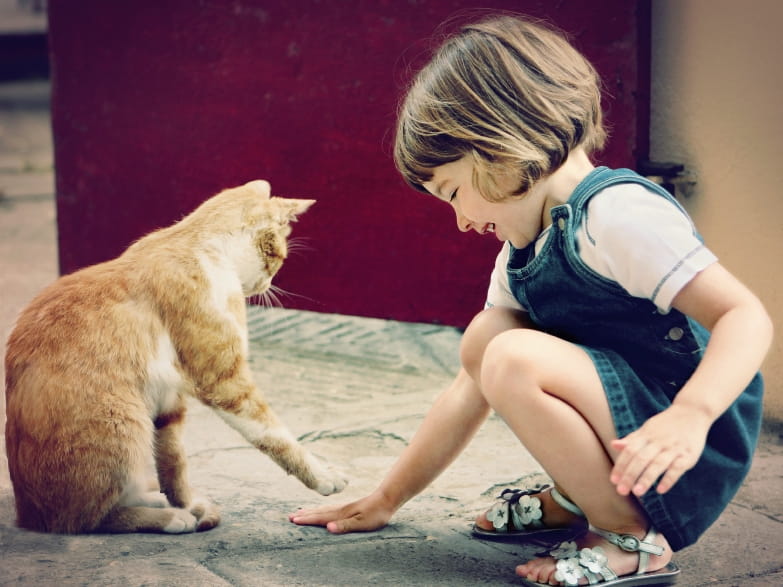Cat Bites and Scratches Sometimes More than Just a Cut

The Bottom Line
Bites and scratches from a healthy-appearing cat can make you sick. Always tell your healthcare provider about cat bites and scratches if you have unexplained symptoms, especially fever.

The Full Story
As cuddly and cute as they look, cats have the potential to cause illnesses in humans as a result of their bites and scratches. In the US, there are an estimated 400,000 cat bites resulting in 66,000 visits to emergency rooms every year.
Cat bites and scratches can spread a bacterial infection called cat-scratch disease (CSD) caused by the bacteria Bartonella hanselae. The disease spreads when an infected cat bites or scratches hard enough to break the skin or when it licks a person’s open wound.
Symptoms of CSD occur 3-10 days after the skin is broken as a mild infection at the site of the scratch or bite. The infected area can appear swollen and red and might have pus. It might feel warm or be painful. An infected person can also have a fever, headache, poor appetite, and feel tired.
Generally, CSD is not serious and medical treatment might not be needed. In some cases, treatment with an antibiotic is necessary. CSD is more serious for people who have weakened immune systems.
Cats can become infected with B. hanselae from flea bites and flea droppings entering into their wounds. This can occur if the cat has fleas or fights with infected cats. Surprisingly, kittens less than 1 year of age are more likely to have B. hanselae infections than adult cats. It is important to note that most cats with B. hanselae infections show no signs of illness. A healthy-appearing cat can give you CSD.
If a cat does bite or scratch you, wash the wound right away with soap and warm water and watch for symptoms of CSD.
Diana N. Pei
PharmD Candidate
Certified Specialist in Poison Information
Prevention Tips
- Keep your cat free of fleas (use flea collars or medication).
- Avoid playing roughly with your cat.
- Wash your hands thoroughly with soap and water after playing with a cat.
- Do not allow cats to lick open wounds.
- Do not touch stray or feral cats.
- Keep cats indoors to decrease contact with fleas and to prevent them from fighting with potentially infected cats.
This Really Happened
A 5-year-old boy was admitted to a hospital because he had a fever (up to 104⁰) for 12 days and chest pain for 8 days. He was given an intravenous antibiotic for 3 days and his temperature returned to normal. The boy had received a scratch from a kitten 2 months earlier and his blood tested positive for Bartonella henselae, which is the bacteria responsible for cat-scratch disease.
For More Information
References
Klotz SA, Ianas V, Elliott SP. Cat-scratch disease. Am Fam Physician. 2011;83:152-5.
Massei F, Gori L, Macchia P, et al. The expanded spectrum of bartonellosis in children. Infect Dis Clin North Am. 2005;19:691-711.
Mazur-Melewska K, Mania A, Kemnitz P, et al. Cat-scratch disease: a wide spectrum of clinical pictures. Postep Derm Alergol. 2015;32:216-20.
Prevention Tips
- Keep your cat free of fleas (use flea collars or medication).
- Avoid playing roughly with your cat.
- Wash your hands thoroughly with soap and water after playing with a cat.
- Do not allow cats to lick open wounds.
- Do not touch stray or feral cats.
- Keep cats indoors to decrease contact with fleas and to prevent them from fighting with potentially infected cats.
This Really Happened
A 5-year-old boy was admitted to a hospital because he had a fever (up to 104⁰) for 12 days and chest pain for 8 days. He was given an intravenous antibiotic for 3 days and his temperature returned to normal. The boy had received a scratch from a kitten 2 months earlier and his blood tested positive for Bartonella henselae, which is the bacteria responsible for cat-scratch disease.
